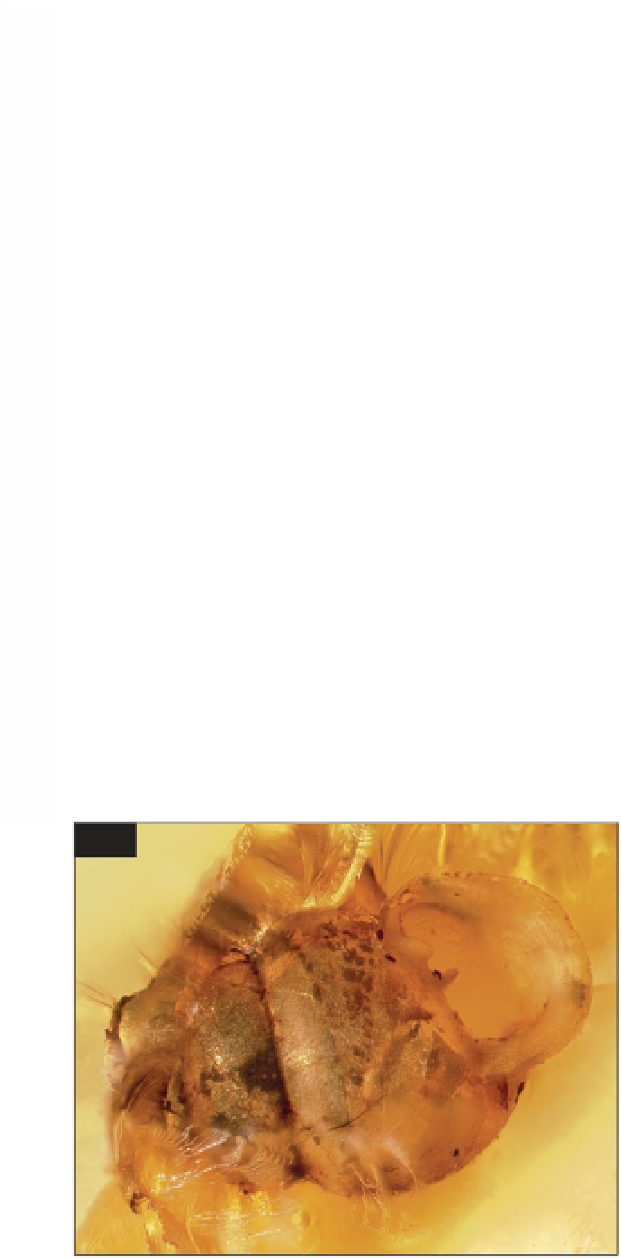Geoscience Reference
In-Depth Information
quite common as fossils and, rarely, a
fossil mushroom has been preserved
(Poinar and Singer, 1990).
detritivorous millipedes (Diplopoda), both
of which are common in terrestrial
habitats, especially where it is damp, such
as beneath decaying logs and in leaf litter.
The centipede
Cryptops
has been reported
from Dominican amber (Shear, 1987) as
well as the house centipede
Scutigera
(Poinar, 1992). Among millipedes, a whole
range of genera which occur today in the
region have been recorded from the
amber (Shear, 1981; Santiago-Blay and
Poinar, 1992). These include the small,
bristly polyxenids (
257
), siphonophorids,
and the flat-backed polyxenids. One very
rare fossil from Dominican amber is a
velvet worm (Onychophora; Poinar,
1996a). We met this group back in the
Cambrian, when they were marine
(Chapter 3: The Burgess Shale). They
became terrestrial and now occur in
rotting logs in the southern hemisphere.
Nematodes and mollusks
Microscopic roundworms (Nematoda)
are common just about everywhere, so it is
not surprising that they have been
reported in Dominican amber (Poinar
and Poinar, 1999). Both free-living and
parasitic nematodes have been found as
fossils in the amber. Other microscopic
free-living animals which lived among the
damp moss and algae of the epiphytes
include rotifers (Poinar and Ricci, 1992).
Numerous shells of land snails (
256
) have
been reported in Dominican amber
(Poinar and Roth, 1991), all of which
occur in the tropical and subtropical
regions of the Caribbean today.
Crustaceans
Crustaceans need damp places to live on
land, so tropical forests provide ideal
habitats for them. Amphipods (hoppers)
(Bousfield and Poinar, 1995) and isopods
(woodlice) (Schmalfuss, 1980, 1984)
occur in Dominican amber.
Insects and their relatives
Primitive hexapods (insects and related
groups) are represented in Dominican
amber by diplurans and several species of
Collembola (springtails) (Mari Mutt,
1983). Members of the latter group are
quite likely to get preserved in fossil resin
because of their jumping method of
locomotion. Silverfish (Thysanura),
common today under bark and stones are
Myriapods
Myriapods include the predatory
centipedes (Chilopoda) and mainly
256
256 Land snail shell PC.
Length about 1.4 mm
0.05 in.



Search WWH ::

Custom Search